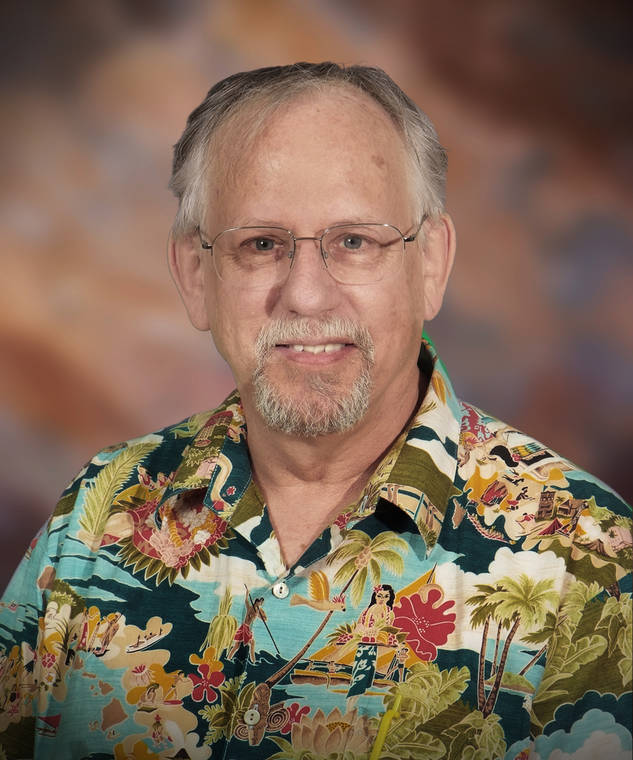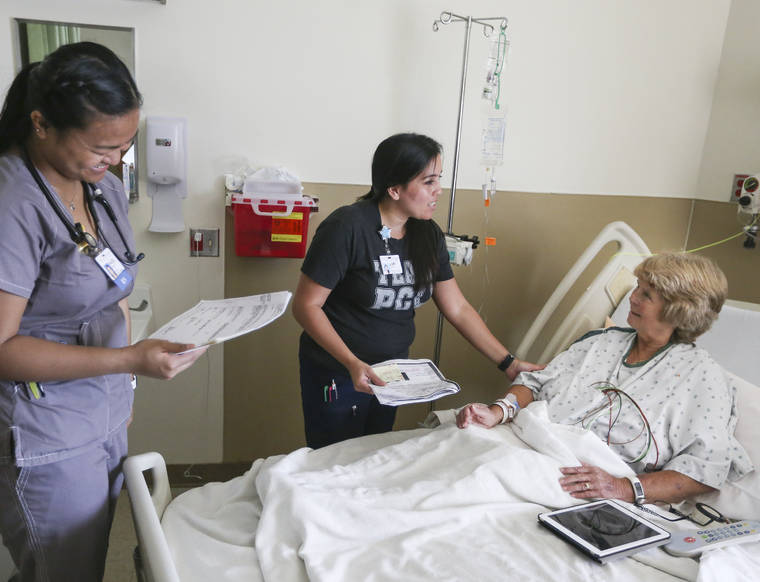Hilo hospital makes the grade in safety rankings
Hilo Medical Center received an “A” in hospital safety rankings released this week by the Leapfrog Group, a nonprofit organization that aims to improve the quality and safety of American health care.
Two other Big Island hospitals — North Hawaii Community Hospital in Waimea and Kona Community Hospital in Kealakekua — each received a “C,” an improvement for the former compared to grades released in the fall, and a consistent grade for the latter.
ADVERTISING
According to Leapfrog, letter grades of A, B, C, D or F — which represent a hospital’s overall performance in keeping patients safe from preventable harm and medical errors — are assigned to more than 2,600 general acute-care hospitals throughout the country twice a year.
The grades are determined by using national performance measures of patient safety from the Centers for Medicare and Medicaid Services, the Leapfrog Hospital Survey and other supplemental sources.
Tandy Newsome, director of quality management at Hilo Medical Center, was not surprised by the “A” rating, which the hospital has received the past two years.
Patient safety is a top priority, she said.
Chief Medical Officer Dr. Jon Martell said Newsome “has put a lot of work into building a culture of quality here at the hospital.”
HMC isn’t seeking accolades, it’s “seeking to deliver the highest quality care, and if it gets recognized, we appreciate (that),” he said.
“If not, it’s not going to make any difference,” Martell said. “We’re going to continue on with our safety and doing what’s best for the patients. Ultimately, that is the bottom line — what is best for the patient. And if you take care of that, the rest takes care of itself.”
The Leapfrog Hospital Safety Grade evaluates metrics such as methicillin-resistant staphylococcus aureus, or MRSA, blood and urinary tract infections; surgical complications such as collapsed lungs, serious breathing problems, dangerous blood clots and accidental cuts and tears; practices to prevent errors including ordering medication through a computerized system, hand-washing and communication about medicines and discharge; safety problems such as bed sores and patient falls or injuries; and communication with doctors and nurses and the responsiveness of hospital staff.
HMC largely rated above average in most areas, but rated below average in ordering medications through a computer, safe medication administration and communication about discharge.
Data for some measures, such as hand-washing, staff collaborations, effective leadership, having enough qualified nurses and having specially-trained doctors for ICU patients, were not reported, according to the report.
“I’m somewhat taken up short on the deficiency on ordering prescriptions through the computer,” Martell said. “That is something that we actually do as a routine and put a lot of work and incentive behind it.”
However, Martell said a lot of the evaluated data came from 2017 and 2018, and maybe hasn’t “caught up with current practice.”
Martell said the data that’s evaluated is “mixed,” with some current information, but a fair amount from previous years.
“Everybody across the country is being judged on the same data, so the comparisons are still valid, just not valid for today exactly,” he said.
The value of rankings such as the Leapfrog grade can vary depending on a patient’s location.
For HMC, which is the only hospital in the geographic area, “folks can’t pick and choose their hospital,” Martell said, but rankings can be reassuring.
“It speaks to the quality of care that we provide on our island in relationship to hospitals through the state,” said HMC spokeswoman Elena Cabatu. “It shows that we are providing excellent care on our island as it compares to other A-rated hospitals throughout the state. That speaks to our ability to care for patients on island and closer to home. We really want to take care of patients on our island.”
Martell said HMC is always looking to improve and is constantly monitoring data.
Newsome said the hospital encourages employees to report things that are problematic or need improvement.
“We’re constantly trying to improve patient satisfaction, patient experience,” she said.
According to Newsome, the hospital has taken a number of steps to do so, including bedside reporting, where the nurse going off duty meets with the nurse coming on duty and discusses care with the patient there, among other efforts.
Chad Shibuya, director of infection prevention, said it’s not just doctors and nurses who improve the patient experience or patient safety, but others as well — the food and nutrition department, laundry department, house keeping and environmental service, and even maintenance staff who keep the air conditioning working.
HMC also this week was named a recipient of the Patient Safety Excellence Award by Healthgrades, an online resource for information about physicians and hospitals.
That award recognizes hospitals that have the lowest occurrences of 14 preventable patient safety events, and those hospitals are in the top 10% in the nation for patient safety, according to Healthgrades.
HMC was the only Hawaii hospital recognized for that distinction.
Leapfrog’s safety grade is issued each year in the fall and spring. HMC has received an “A” in each report since fall 2016.
North Hawaii Community Hospital’s “C” is an improvement from last fall’s report, when it received a “D.” It was not scored in prior years.
An NHCH hospital spokesperson did not immediately respond to a request for comment.
Kona Community Hospital received a “D” in spring 2016, but received a “C” in all subsequent reports.
A phone call seeking comment from the Kona hospital was not immediately returned.
Elsewhere in Hawaii, Kaiser Foundation Hospital-Moanalua Medical Center and Straub Clinic and Hospital, both in Honolulu, and Pali Momi Medical Center in Aiea, Oahu, received an “A”; Castle Medical Center in Kailua, Oahu, The Queen’s Medical Center in Honolulu, The Queens Medical Center West Oahu in Ewa Beach and Wilcox Memorial Hospital in Lihue, Kauai, received a “B”; and Maui Memorial Medical Center in Wailuku and Kuakini Medical Center in Honolulu received a “C.”
Full reports can be found online at hospitalsafetygrade.org.
Email Stephanie Salmons at ssalmons@hawaiitribune-herald.com.





